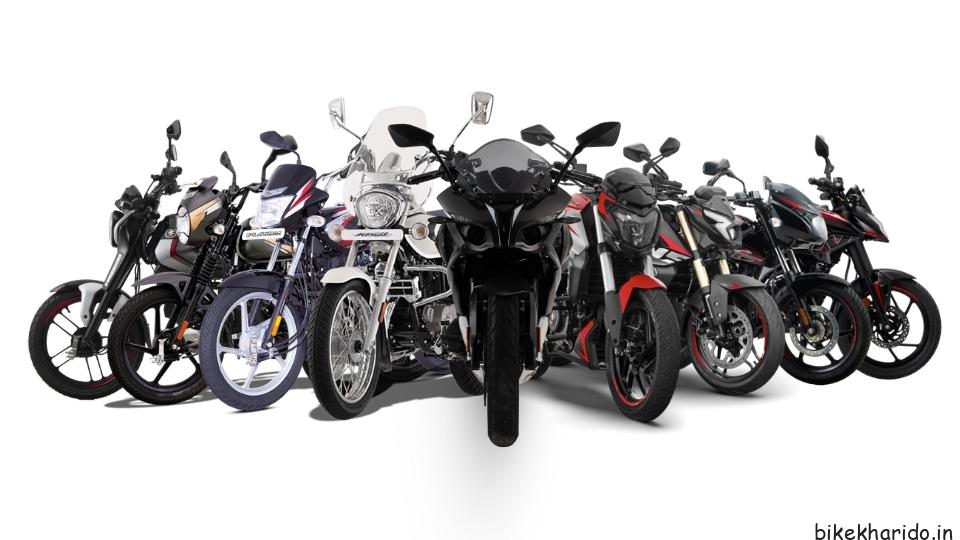Bajaj Auto Sales Sept 2025: Strong Domestic & Export Growth

Bajaj Auto Sales in September 2025: Domestic & Exports Reflect Robust Growth
Bajaj Auto Limited has reported another strong month in September 2025, driven by a healthy mix of domestic recovery and robust export performance. Both two-wheelers and commercial vehicles contributed to the growth, with exports emerging as the standout performer. Despite some pressure in selective domestic segments, the company managed to deliver a solid year-on-year gain.
Key Sales Performance
- Total sales (2W + CV): 5,10,504 units (up 9% from 4,69,531 in Sept 2024)
- Domestic sales (2W + CV): 3,25,252 units (up 4%)
- Export sales (2W + CV): 1,85,252 units (up 18%)
Two-Wheelers
Two-wheelers remained the backbone of Bajaj Auto’s performance.
- Total: 4,30,853 units (up 8%)
- Domestic: 2,73,188 units (up 5%)
- Exports: 1,57,665 units (up 12%)
Commercial Vehicles (CV)
The CV segment displayed a mixed trend.
- Total CV sales: 79,651 units (up 15%)
- Domestic CV sales: 52,064 units (slight decline of 1%)
- Exports: 27,587 units (up 67%)
H1 FY 2026 (April–September) Snapshot
For the April–September 2025 period, Bajaj Auto sold 24,05,357 units, reflecting a 4% growth over the same period last year.
- Domestic cumulative sales: 13,75,601 units (down 6%)
- Exports cumulative sales: 10,29,756 units (up 20%)
Segment-wise:
- Two-Wheelers: 20,17,778 units (up 2%)
Domestic: down 8% to 11,25,920 units
Exports: up 17% to 8,91,858 units - Commercial Vehicles: 3,87,579 units (up 14%)
Domestic: 2,49,681 units (stable at +1%)
Exports: 1,37,898 units (up 51%)
Read More: Ampere Magnus
Growth Drivers
- Export Strength: International markets delivered strong double-digit growth, particularly in commercial vehicles.
- Product Portfolio: Bajaj’s Pulsar and commuter range remain well-positioned for both price-sensitive domestic buyers and export markets.
- Festive Demand Prep: OEMs typically push volumes ahead of festive season, and Bajaj benefitted from this momentum.
- Tax and Market Dynamics: GST adjustments and timing effects likely influenced consumer buying patterns.
- Base Effect: Lower comparison figures from the previous year boosted growth percentages, especially in CV exports.
Challenges Ahead
- Domestic demand recovery remains uneven, especially in rural markets.
- Rising input costs and forex fluctuations could pressure margins.
- Global supply chain risks and regulatory changes may create headwinds.
Outlook
Exports continue to act as a growth engine, cushioning Bajaj Auto against softer domestic trends. With the festive season around the corner, October–December could provide another lift to sales, particularly if consumer demand improves further.
Overall, September 2025 has reinforced Bajaj Auto’s strength in balancing domestic challenges with global opportunities, keeping the company firmly on its growth path.
Bajaj Auto Sales Sept 2025: Strong Domestic & Export Growth

Bajaj Auto Sales in September 2025: Domestic & Exports Reflect Robust Growth
Bajaj Auto Limited has reported another strong month in September 2025, driven by a healthy mix of domestic recovery and robust export performance. Both two-wheelers and commercial vehicles contributed to the growth, with exports emerging as the standout performer. Despite some pressure in selective domestic segments, the company managed to deliver a solid year-on-year gain.
Key Sales Performance
- Total sales (2W + CV): 5,10,504 units (up 9% from 4,69,531 in Sept 2024)
- Domestic sales (2W + CV): 3,25,252 units (up 4%)
- Export sales (2W + CV): 1,85,252 units (up 18%)
Two-Wheelers
Two-wheelers remained the backbone of Bajaj Auto’s performance.
- Total: 4,30,853 units (up 8%)
- Domestic: 2,73,188 units (up 5%)
- Exports: 1,57,665 units (up 12%)
Commercial Vehicles (CV)
The CV segment displayed a mixed trend.
- Total CV sales: 79,651 units (up 15%)
- Domestic CV sales: 52,064 units (slight decline of 1%)
- Exports: 27,587 units (up 67%)
H1 FY 2026 (April–September) Snapshot
For the April–September 2025 period, Bajaj Auto sold 24,05,357 units, reflecting a 4% growth over the same period last year.
- Domestic cumulative sales: 13,75,601 units (down 6%)
- Exports cumulative sales: 10,29,756 units (up 20%)
Segment-wise:
- Two-Wheelers: 20,17,778 units (up 2%)
Domestic: down 8% to 11,25,920 units
Exports: up 17% to 8,91,858 units - Commercial Vehicles: 3,87,579 units (up 14%)
Domestic: 2,49,681 units (stable at +1%)
Exports: 1,37,898 units (up 51%)
Read More: Ampere Magnus
Growth Drivers
- Export Strength: International markets delivered strong double-digit growth, particularly in commercial vehicles.
- Product Portfolio: Bajaj’s Pulsar and commuter range remain well-positioned for both price-sensitive domestic buyers and export markets.
- Festive Demand Prep: OEMs typically push volumes ahead of festive season, and Bajaj benefitted from this momentum.
- Tax and Market Dynamics: GST adjustments and timing effects likely influenced consumer buying patterns.
- Base Effect: Lower comparison figures from the previous year boosted growth percentages, especially in CV exports.
Challenges Ahead
- Domestic demand recovery remains uneven, especially in rural markets.
- Rising input costs and forex fluctuations could pressure margins.
- Global supply chain risks and regulatory changes may create headwinds.
Outlook
Exports continue to act as a growth engine, cushioning Bajaj Auto against softer domestic trends. With the festive season around the corner, October–December could provide another lift to sales, particularly if consumer demand improves further.
Overall, September 2025 has reinforced Bajaj Auto’s strength in balancing domestic challenges with global opportunities, keeping the company firmly on its growth path.



